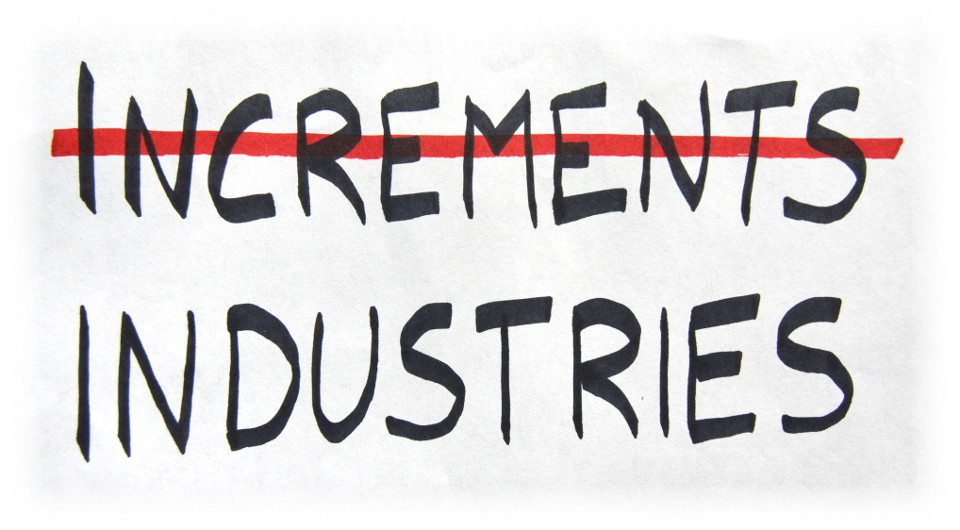How often do you interact with computers in a day? Likely on more occasions than you can count or even recognise! Can you remember a time when you didn’t interact with computers on a daily basis?
We’ve just added to our bibliography The Dream Machine, which recounts in splendid detail the history of interactive computing. It may come as a surprise that the essence of our modern computing paradigm (graphical user interfaces, personal computing, laser printing, Ethernet, …) was in working prototype form by the mid-seventies, the fruit of 5 years of corporate-funded research at Xerox PARC preceded by 8 years of government-funded research across US institutions through ARPA’s Information Processing Techniques Office.
The first director of that office, and the central figure in the book, is J.C.R. Licklider. Two years prior to taking that office, “Lick” would publish his vision of Man-Computer Symbiosis, envisaging the tight coupling of human brains and computing machines. Given that reelyActive’s vision can be summarised as computing machines understanding the world without reliance on human brains — arguably an extension of his vision — we asked ourselves what lessons we can learn from the history of interactive computing?
Coincidentally, we’ve had the recent pleasure of interacting with two key figures from the book: Vint Cerf and Alan Kay. Cerf’s three pillars for the IoT and his three-pronged call to action, which we discussed in Vint Cerf and the Good Fight for the IoT, resonate even stronger in light of this history. And Kay so eloquently reminded us:
“the goodness of the results is most highly correlated with the goodness of the funding”
Creating a whole new industry, as Kay and his colleagues effectively achieved at PARC, was contingent on good funding served with a good dose of patience: “I’ve never heard of VCs being interested in time frames like that”.
While Kay’s concern is very much consistent with our experiences fundraising as a startup, it is not without exceptions. In our blog post Investing in a Value-First Sharing Economy we highlighted an emerging investment philosophy best described as a two-step process:
- create the industry, open to competition
- out-execute any competition by leveraging the experience/goodwill gained
Clearly Xerox failed at Step 2 (the book examines this in detail). Incredibly, they’re not even the only textbook case among corporations headquartered in Rochester, NY! Remember Kodak and digital photography? Armed with so many lessons from history, especially concerning the execution of Step 2, would we not again expect good results from good funding, regardless of the funding source?
It has been four decades since the PARC breakthrough. The iPhone has now been around for a decade, today “tightly coupling” (or not!) our primary human-computer interaction through a 5″ screen. It is difficult to argue that this is the culmination of Licklider’s vision, but rather easy to argue that we’re (over)due for the next trillion-dollar computing industry. Goodness! With history as our collective guide, all that seems to be missing is some good funding sprinkled with a pinch of patience!

Comments
5 responses to “Creating the next computing industry”
[…] Panelists Kurtis McBride of Miovision and Dan Riegel of Sidewalk Labs both argued for the former. —But wait.— The Internet was primarily government-funded and took decades to build, whereas both Miovision and Sidewalk Labs are venture-backed companies, and, critically, Alan Kay reminded us last year: […]
LikeLike
[…] a question we asked that same year in our post on creating the next computing industry. As Alan Kay, veteran of Xerox PARC (which did think long-term) and creator of the Dynabook (which […]
LikeLike
[…] 2017, we were fortunate to have an e-mail exchange with Kay sparking our blog post on creating the next computing industry. We kick off the new decade in our Park Avenue Research Centre with the ambition to do exactly […]
LikeLike
[…] why wasn’t this happening? Why weren’t we Creating the next computing industry? In an e-mail exchange with Alan Kay that same year, he argued […]
LikeLike
[…] encouraged over the past decade. Iconic figures like Alan Kay, with whom we spoke in 2017 about creating the next computing industry, have similarly […]
LikeLike